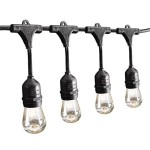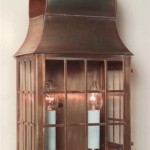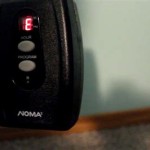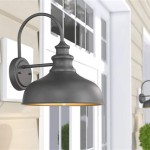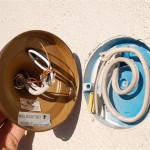```html
Outdoor Light Timer Stopped Working: Troubleshooting and Solutions
Outdoor light timers offer convenience and energy savings by automatically controlling exterior lighting. When an outdoor light timer ceases to function, it can disrupt established routines and compromise security. Determining the cause and implementing appropriate solutions are crucial for restoring the timer to proper working order. This article explores common reasons for outdoor light timer failure and provides a systematic approach to troubleshooting and resolving these issues.
Power Supply and Circuit Integrity
One of the most fundamental aspects to investigate when an outdoor light timer malfunctions is the power supply. Ensuring the timer receives adequate electrical power is essential for its operation. This involves examining both the circuit breaker and the outlet to which the timer is connected.
First, locate the circuit breaker that controls the outdoor outlet. The circuit breaker panel is usually found in the basement, garage, or utility room. Verify that the breaker is in the 'on' position. If the breaker has tripped, switch it to the 'off' position and then back to the 'on' position. If the breaker trips again immediately, it indicates a potential short circuit or an overloaded circuit requiring further investigation by a qualified electrician. A continuously tripping breaker is a safety hazard and must be addressed promptly.
Next, test the outlet itself. A simple outlet tester, available at most hardware stores, can quickly determine if the outlet is receiving power. Plug the tester into the outlet. If the tester indicates no power, even after resetting the breaker, there may be a wiring problem within the outlet or the wiring connecting the outlet to the circuit breaker. This situation typically requires the assistance of a licensed electrician to diagnose and repair the problem safely.
Furthermore, inspect the power cord of the timer. Look for any signs of damage, such as cuts, fraying, or exposed wires. A damaged power cord can interrupt the electrical supply to the timer. If damage is evident, replacing the power cord, if possible, or replacing the entire timer unit may be necessary. Ensure that any replacement cord is rated for outdoor use and properly grounded if applicable.
Loose connections can also disrupt the power supply. Inspect the wiring connections within the timer housing (if accessible and safe to do so) and the connections at the outlet. Loose wires can prevent proper electrical flow. Tighten any loose connections with a screwdriver, ensuring the power is disconnected before undertaking any electrical work. If unsure about how to safely access and tighten connections, consult with an electrician. Never attempt electrical repairs without proper knowledge and safety precautions.
Timer Programming and Settings
Even with a stable power supply, the timer's settings and programming can be the source of malfunction. Incorrect settings, deactivated modes, or overridden schedules can prevent the lights from turning on or off as expected. A thorough review of the timer’s programming is crucial.
Refer to the timer's instruction manual. Different timers have different programming interfaces and functionalities. The manual will provide specific instructions on how to set the time, date, and desired operating schedules. Ensure that the current time and date are accurately set. This information is often used as a reference point for the timer's programmed on and off times. An incorrect time or date will cause the lights to turn on and off at the wrong times.
Examine the programmed schedules. Most outdoor light timers offer multiple programming options, allowing for different on and off times for different days of the week. Review each programmed schedule to ensure that the desired on and off times are correctly entered. Look for any accidental overlaps or conflicting schedules. If an overlap exists, the timer may prioritize the first schedule or become confused, leading to unpredictable behavior.
Check for override modes. Many timers include manual override functions that allow the user to temporarily turn the lights on or off, regardless of the programmed schedule. Ensure that the timer is not in an override mode, as this may be preventing the automatic operation of the timer. Disabling the override mode should restore the timer to its programmed settings.
Consider resetting the timer to factory settings. If troubleshooting the programming proves difficult, resetting the timer to its default settings can be a useful step. This will erase all existing schedules and settings, allowing the user to start fresh with the programming process. The instruction manual will specify how to perform a factory reset. After resetting the timer, carefully reprogram it with the desired schedules and settings, ensuring accuracy in each step.
Environmental Factors and Timer Condition
Outdoor light timers are subject to various environmental conditions that can contribute to their failure. Exposure to moisture, extreme temperatures, and physical damage can all negatively impact the timer's performance and lifespan.
Inspect the timer for signs of water damage. Outdoor timers are typically designed to be weather-resistant, but they are not always fully waterproof. Check for water intrusion into the timer housing. Moisture can corrode internal components and cause electrical malfunctions. If water damage is suspected, allow the timer to dry completely before attempting to use it again. Consider relocating the timer to a more sheltered location or replacing it with a timer specifically designed for wet environments.
Consider the effects of extreme temperatures. Both excessively hot and cold temperatures can affect the functionality of the timer's internal components. Extreme heat can cause the timer's plastic housing to deform or its electronic components to overheat and fail. Extreme cold can cause the timer's display to become sluggish or unresponsive, and can also affect the battery life of timers that use battery backup. If the timer is consistently exposed to extreme temperatures, consider choosing a timer that is rated for a wider temperature range.
Examine the timer for physical damage. Impacts, drops, or other forms of physical stress can damage the timer's internal components or its external housing. Cracks in the housing can allow moisture to enter, and damaged buttons or switches can prevent the timer from being programmed or operated correctly. If the timer is visibly damaged, it may be necessary to replace it.
Evaluate the timer's age and condition. Outdoor light timers have a limited lifespan. Over time, their internal components can wear out, leading to reduced performance or complete failure. If the timer is several years old or has been in use for an extended period, it may simply be reaching the end of its operational life. Replacing the timer with a new unit may be the most cost-effective solution in this situation. When replacing a timer, consider upgrading to a newer model with advanced features, such as automatic daylight saving time adjustments or smartphone control.
Check for any obstructions or debris that may be interfering with the timer's sensors (if applicable). Some timers use light sensors to automatically adjust their on and off times based on the ambient light level. If the sensor is obstructed by leaves, dirt, or other debris, it may not be able to accurately detect the light level, leading to incorrect operation. Clean the sensor regularly to ensure accurate readings.
In addition to the above points, consider the type of lights being controlled by the timer. Some timers are not compatible with certain types of lights, such as LED lights with high inrush current. Using an incompatible timer with these types of lights can shorten the timer's lifespan or cause it to malfunction. Ensure that the timer is rated for the type and wattage of lights being controlled.
By systematically addressing these potential issues, identifying the cause of the outdoor light timer failure and restoring its functionality becomes more manageable. In cases where the problem is complex or involves electrical wiring, consulting a qualified electrician is the safest and most prudent course of action.
```
Landscape Lights Not Working Solutions To 7 Common Problems

Outdoor Landscape Light Troubleshooting Guide Abulous Lighting

How To Reset Your Landscape Lighting Timer Fall Back

How To Set The Start And Stop Times An Outdoor Light Timer

Mechanical Timer Not Working 5 Possible Reasons

Landscape Lights Not Working Solutions To 7 Common Problems

How To Set The Start And Stop Times An Outdoor Light Timer

Step By Guide How To Reset Your Outdoor Light Timer Optimize Govee

Landscape Lights Not Working Solutions To 7 Common Problems

How To Set The Start And Stop Times An Outdoor Light Timer
Related Posts
